Route 66 is one of the most famous roads in the world, and the Pacific Coast Highway in California is one of the most beautiful. It runs along the Pacific coastline, and speed limit signs are, with some exaggeration, unnecessary. The breathtaking ocean views work much more reliably on drivers. I’ve prepared an itinerary for your road trip along the Pacific Coast Highway, and it’s going to be a ride because “the west coast is the best coast”. The itinerary includes a map, trip tips, points of interest, and recommended accommodations.
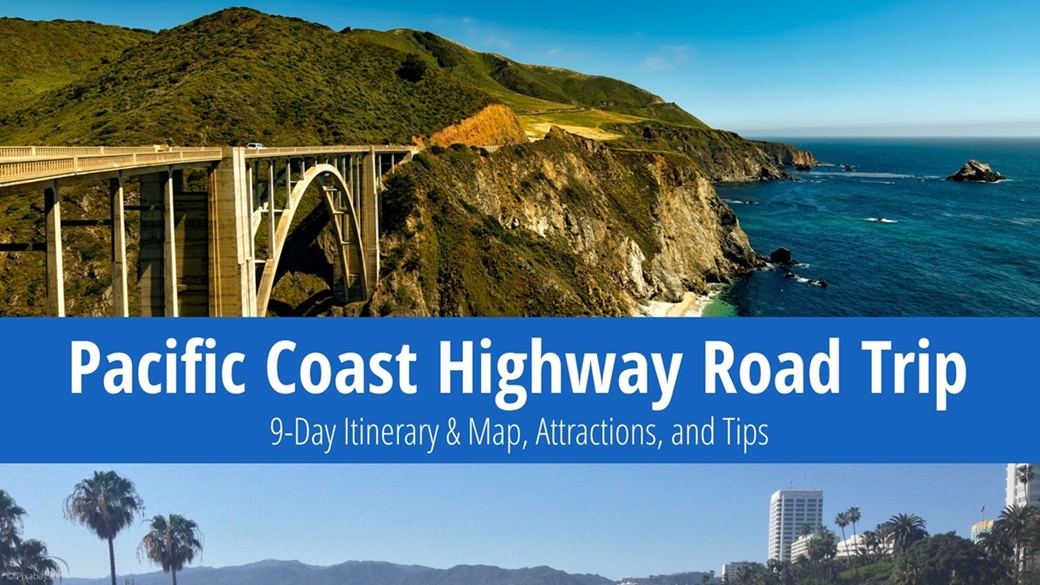
Table of Contents
- How Much Does a Road Trip on the Pacific Coast Highway Cost?
- Itinerary for a 9-Day Road Trip Along the Pacific Coast Highway
- 12 Tips for the Perfect Road Trip Along the Pacific Coast Highway
- Day 1: Arrival in San Diego
- Day 2: USS Midway Aircraft Carrier, San Diego Zoo
- Day 3: SeaWorld San Diego
- Day 4: Huntington Beach to Los Angeles
- Day 5: Venice Beach and Santa Monica Pier
- Day 6: Santa Barbara and Pismo Beach
- Day 7: Hearst Castle, McWay Falls Waterfall, and Bixby Creek Bridge
- Day 8: Monterey Aquarium, 17-Mile Drive, Santa Cruz
- Day 9: San Francisco, Muir Beach Overlook, Glass Beach
- Itinerary for the Coming Days
How Much Does a Road Trip on the Pacific Coast Highway Cost?
It depends on how expensive you want your trip to the USA to be.
The lowest possible costs for a 9-day road trip along the Pacific Coast Highway are estimated at $2,000 per person. The basic assumption is that you manage to buy a discounted flight for less than $500 and share the costs of inexpensive motels and a small car among four people. You will need to eat at cheaper fast food places and skip more expensive attractions.
I consider a solid budget for the road trip to be at least $3,500 per person. This allows you to share the costs between just two people and upgrade from a small car to a convertible. You’ll be able to visit more expensive attractions and amusement parks and enjoy more comfortable accommodations. With a higher budget, you won’t need to wait for a discounted flight and can avoid eating at the cheapest fast food places.
All prices and estimated costs mentioned in this article were last updated on March 14, 2025.
✈️ Flight to Los Angeles / San Francisco
The round-trip flight price from the UK and surrounding countries to California usually ranges from $320 to $700. The lower end corresponds to discounted tickets with several layovers, off-season dates, and carry-on luggage only.
The higher end corresponds to travel during the peak summer season. The most likely price is around $540, and flights to the USA are recommended to be booked at least 3 months in advance.
🚗 Car Rental
Renting a comfortable SUV for 9 days costs around $435, including full insurance. For the cheapest economy car, you’ll pay at least $400, and for a convertible for 9 days, approximately $750 or more.
The rental price is influenced by various factors, so I recommend calculating the estimated price for each car class. The calculation is free and doesn’t require entering an email. Before departure, read the tips on driving a car and car rental in the USA.
⛽ Gasoline
The average gasoline price in California is about $1.23 per liter (updated March 14, 2025). With an average consumption of 10 liters per 100 km, you should expect costs around $0.12 per kilometer.
In the USA, gasoline is sold in gallons, with 1 gallon = 3.785 liters. The price of fuel in the USA is significantly influenced by oil prices, so it fluctuates quite a bit, both upwards and downwards.
🛏️ Accommodation
The cheapest motel room can be found for approximately $75 to $85. The price depends heavily on the current availability, location, and accommodation level. Expect basic amenities, with free internet and parking, and in some motels, free breakfast. I recommend booking motels through a reliable portal like Booking.com.
🍔 Food
The cheapest food can be found at fast food chains like Chipotle Mexican Grill, In-N-Out Burger, or McDonald’s. Expect to spend at least $25 per day, including water. For bigger eaters or more demanding diners, plan for $35 to $40 per day.
☂️ Travel Insurance
You can get single-trip travel insurance for the USA for just a few hundred crowns. If you travel abroad regularly, consider annual insurance or insurance linked to your credit card. Never underestimate the insurance coverage for medical expenses; I recommend choosing a limit of at least $250,000.
👮 Entering the USA with ESTA
For tourists traveling to the USA for up to 90 days, an approved ESTA registration is sufficient. The fee for filling out the ESTA is $4.00, and after approval, an additional $17.00 will be charged to your card. If you’ve never exceeded the allowed stay period and have no criminal record, your trip to the USA will likely be approved.
🎟️ Entrance Fees and Pocket Money
If you follow all the tips in this article and avoid being too stingy with souvenirs, expect to spend around $1,300 for 10 days. On the other hand, with less than $900 for 10 days, there’s no point in going to the USA unless you want to miss out on the most attractive attractions.
Itinerary for a 9-Day Road Trip Along the Pacific Coast Highway
The map for the Pacific Coast Highway road trip is available to you on Google Maps. If you open the link in the mobile app, you’ll have the entire itinerary at your fingertips.
12 Tips for the Perfect Road Trip Along the Pacific Coast Highway
🚦 Plan Your Program Ahead of Time
Planning your road trip itinerary on-site usually ends up wasting time. Prepare the itinerary before you depart and book tickets for popular spots in advance. Some tickets are cheaper when bought ahead of time, and for places like Alcatraz, tickets can be sold out weeks in advance.
The longer your road trip, the higher the likelihood of delays. The weather may turn bad, you might decide to stay a day longer in one place, or you could be tired. When preparing the itinerary, I recommend the traffic light principle, where you mark each point with one of three colors.
Green indicates attractions you want to visit at all costs or those you already have tickets for. Yellow marks places you can remove from the program if there’s no time. Red highlights places you can add to the program if there’s extra time.
💭 What Do You Expect From the Road Trip?
Do you want to make the most out of every day at the cost of limited sleep, knowing you can rest at home later? Or do you prefer not to stress about a strict schedule and enjoy a more relaxed travel pace? Clarify this and adapt the itinerary according to the preferences of all travelers.
📅 When to Take a Road Trip on the Pacific Coast Highway
The weather in California is beautiful year-round. The peak season is in July and August, when flights, accommodation, and car rentals are more expensive. Expect crowds at popular attractions and in the national parks. Rather than rain, expect dense fog around San Francisco.
📍 Where to Rent a Car
I have had good experiences with RentalCars.com. They compare offers from several car rental companies, and the rental price includes their own comprehensive insurance. When picking up the car, you can decline all offers from persistent salespeople, and you’ll still be well covered in case of any damage.
Rental prices vary depending on the dates, so for an estimate, you can calculate it non-bindingly here.
🏠 One-Way Return Fee
Some rental companies charge a fee of up to $300 for returning the car at a different location to cover the costs of transporting the car back to the home branch. The fee is usually higher when traveling from north to south. However, it’s worth renting a car in San Diego and returning it in San Francisco. On RentalCars.com, I found rental offers where the “one-way fee” is waived.
🚗 Which Car to Rent
Is this road trip going to be a life experience, or do you want to save every penny? Comfortable SUVs are about 15-30% more expensive than the cheapest cars, and a convertible will cost you an additional 70-75%. Remember, you’ll be spending long hours in the car and probably carrying several bags. I recommend choosing either a convertible for a greater experience, or one of the SUV models for a more comfortable journey.
🔃 From San Diego to San Francisco, or Vice Versa?
You can reverse the itinerary, rent a car in San Francisco and head south. I compared car rental prices and found that traveling from San Diego to San Francisco saves you about 10% on rental costs.
🤵 Take Turns Driving
Before renting the car, decide with your group who will drive. Ideally, two or three people should take turns behind the wheel. Having only one driver for the entire road trip increases the risk of fatigue, which could lead to a delay in the journey.
All drivers must be registered with the rental agency to be included in the insurance policy. If someone not listed on the agreement drives and causes an accident, the insurance company may refuse to cover the damages.
🚧 Watch Out for Road Conditions and Traffic Jams
In Los Angeles, you can count on two things: rain showers, which are often presented on TV as deadly downpours, and daily traffic jams. Before getting in the car, check current road conditions and traffic load in Google Maps. On California State Route 1 (the official name of the Pacific Coast Highway), there are frequent closures in various sections.
🎒 What to Pack for the Trip
Before arriving in the USA, buy a data SIM card, for example, using the service Airalo. This will allow you to use navigation in Google Maps with real-time updates on road closures, accidents, and traffic density.
❓ What to Expect from the Pacific Coast Highway
The Pacific Coast Highway is well-maintained. Along the route, there are plenty of gas stations and small towns where you can stop and grab a bite. On the first day, I recommend stopping at a supermarket to buy a pack of bottled water that you can keep in the car’s trunk for easy access.
➕ Have More Than 9 Days?
The Pacific Coast Highway road trip itinerary assumes you’ll spend a few days in Los Angeles and San Francisco. These cities are so interesting that one day is not enough. If you have up to three weeks, you can take a larger road trip across the western USA or a road trip through the national parks of the USA.
-

Day 1: Arrival in San Diego
San Diego is 8 hours behind the UK. The first few days, you’ll likely experience jet lag, feeling tired and unrested. Don’t plan any demanding activities for your first day after arrival.
After arriving, pick up your rental car and check in at a motel. Unpack your things and relax. If you’re feeling energetic, take a walk around the city. There are restaurants like TGI Fridays, Chipotle, or Wendy’s near the motel.
- Accommodation: California Dreams Hostel – Ocean Beach, San Diego
-
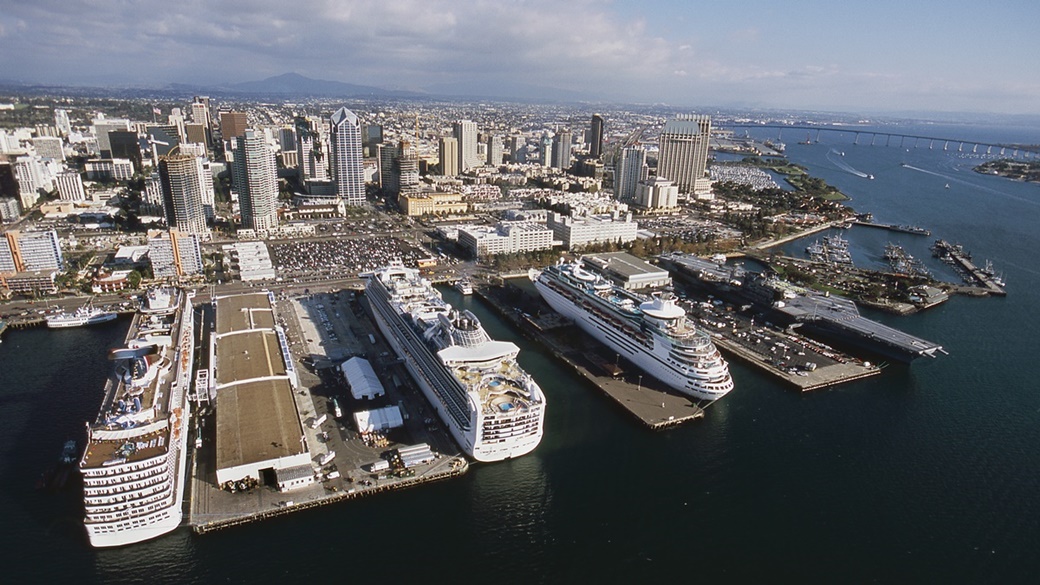
Day 2: USS Midway Aircraft Carrier, San Diego Zoo
📍 USS Midway Museum
The USS Midway (CV-41) served the United States Navy from 1945 to 1992. It participated in the Vietnam War and the Gulf War. After being decommissioned, it was towed to San Diego and turned into a museum.
According to Tripadvisor, the USS Midway Museum is the best attraction in San Diego, and the tour of the aircraft carrier is of interest not only to military enthusiasts. At the entrance, you’ll receive headphones with a commentary in English and other languages. Former marines from the Midway will guide you through about 60 parts of the ship, including the engine room, the bridge, the barracks, and the landing deck for fighter jets.
The ticket price for an adult is $39, and tickets can be purchased online. The USS Midway Museum is open daily from 10:00 AM to 5:00 PM, with the last entry at 4:00 PM. I recommend arriving as early as possible and setting aside 3-4 hours for the tour.
📍 San Diego Zoo
San Diego Zoo appears in almost every ranking of the world’s most beautiful zoos. Spanning 40 hectares, it is home to around 3,700 animals from over 650 species. Major attractions include the Africa Rocks exhibit, which focuses on African wildlife, and the expansive Elephant Odyssey, showcasing African elephants. The exhibit dedicated to koalas is one of the largest breeding groups of these animals outside Australia.
During your visit, be sure to ride the Skyfari cable car, which gives you a bird’s-eye view of the entire zoo. The zoo is open daily from 9:00 AM to 5:00 PM (summer hours extend until 6:00 PM). A quick tour will take you the entire afternoon, while a thorough exploration will last all day.
Tickets for the San Diego Zoo can be purchased online, ideally a few days in advance. The price for a full-day ticket for adults is $76, and children under 11 pay $66. The Skyfari cable car ride is included in the ticket price.
After a full day of activities, expect to feel tired. I recommend not planning any strenuous activities for the evening and instead resting at your motel. It typically takes about two days for your body to adjust to the time zone change.
- Route: 14.0 mi / 0:40 h
- Accommodation: California Dreams Hostel – Ocean Beach, San Diego
-
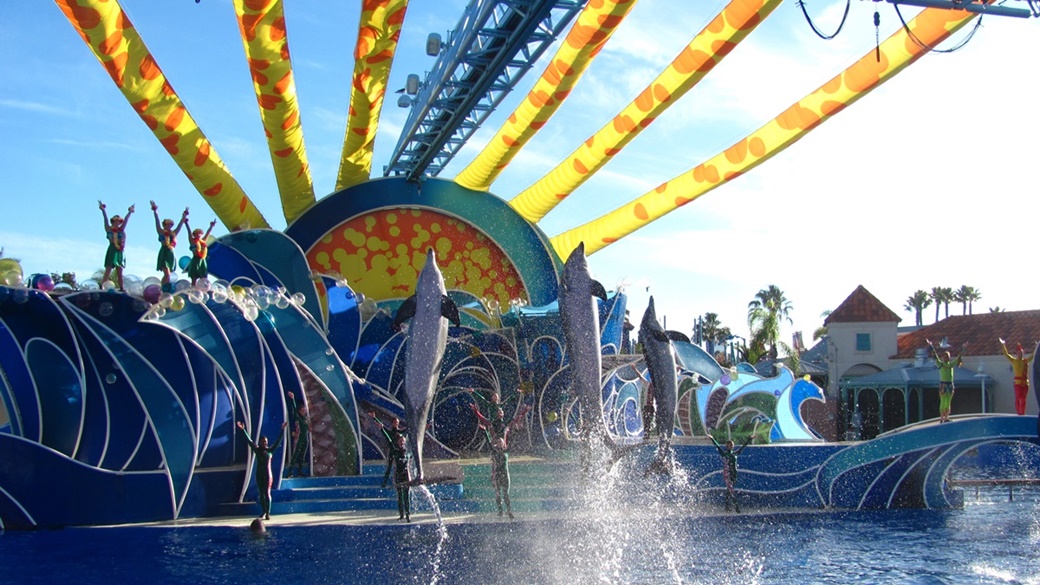
Day 3: SeaWorld San Diego
📍 SeaWorld San Diego
SeaWorld San Diego combines amusement park rides with animal shows. At this one location, you can ride roller coasters, conquer wild rapids, and enjoy dolphin and orca shows.
Set aside a full day to explore SeaWorld San Diego. The park opens at 10:00 AM and stays open until 10:00 PM during the summer. Operating hours vary throughout the year, so be sure to check the website for the latest schedule.
I recommend arriving early and starting with the Skytower attraction, which takes you up to 322 ft. You’ll have a panoramic view of all of San Diego, and on clear days, you can see up to 30 mi. Don’t miss the orca and dolphin shows, as spots tend to fill up quickly, and you wouldn’t want to leave the park without experiencing them.
A full-day ticket to SeaWorld San Diego starts at $60 during the off-season, and you can get the best price in the summer for $78. All rides and shows are included in the ticket price. For an additional $30, you can enjoy unlimited dining at restaurants throughout the park.
Purchase your tickets for SeaWorld San Diego online, where they are cheaper than at the park’s ticket counter.
💡 How to Save on Tickets
If you plan to visit the USS Midway, the Zoo, and SeaWorld over the course of two days, consider purchasing a two-day San Diego Card. You’ll save up to $53 compared to buying individual tickets.
In the evening, return to the same motel where you stayed for the previous two nights. Pack your bags and, if you have time, take a final walk around San Diego, as the next morning will be your first road trip departure.
- Route: 10 mi / 0:30 h
- Accommodation: California Dreams Hostel – Ocean Beach, San Diego
-
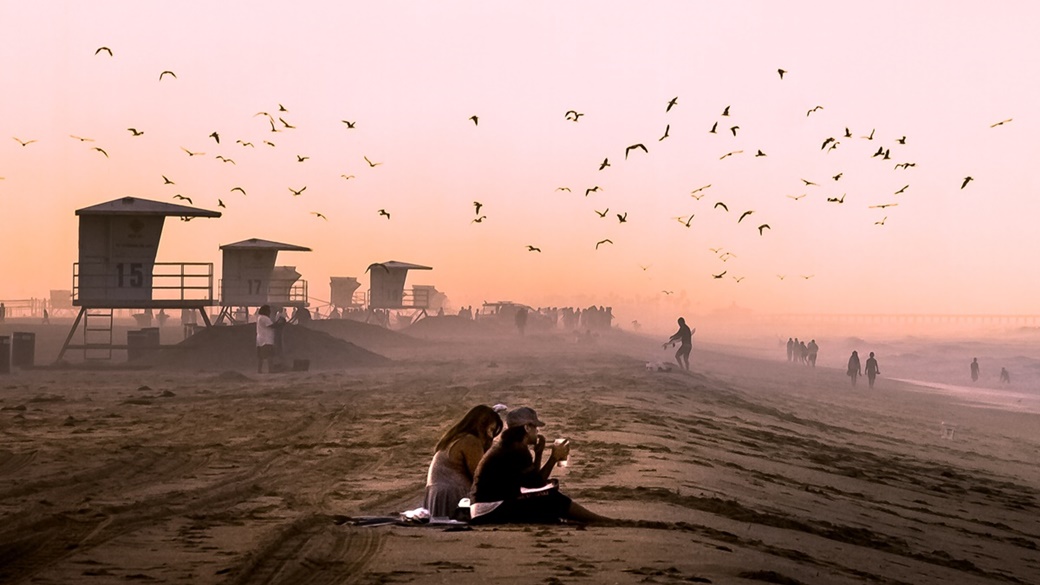
Day 4: Huntington Beach to Los Angeles
Get up early in the morning and head north on the I-5 highway, the Pacific Coast Highway begins in the city of Dana Point.
Plan your first stop after 89 mi and approximately two hours of driving in the surfer town of Huntington Beach. The surfing conditions here are great practically all year round, with board rentals costing $15.00 to $25 per hour.
If you prefer a less active form of entertainment, take a stroll along the 9.5 mi long sandy beach. For lunch, you can stop at a Subway restaurant located right in front of the famous Huntington Beach Pier, which is the city’s most iconic symbol. The pier is listed on the California historic landmarks list California and, with a length of 1,837 ft, is one of the longest on the entire West Coast.
While enjoying a picnic under the palm trees, keep an eye on the real-time traffic updates in Google Maps for the Los Angeles area. The longest traffic jams usually occur between 7:00 AM to 10:00 AM and 3:00 PM to 7:00 PM.
In Los Angeles, I recommend the Samesun Hollywood hostel and hotel. It offers great value for money and is located just a short distance from the famous Hollywood Walk of Fame.
In Los Angeles, I recommend spending at least 2-3 extra days beyond this itinerary. Visiting the Universal Studios theme park or the Griffith Observatory, and taking photos under the nearby Hollywood Sign are among the best experiences. Additional trip ideas can be found in the Los Angeles guide.
- Route: 132 mi / 3:20 h
- Accommodation: Samesun Hollywood, Hollywood
-
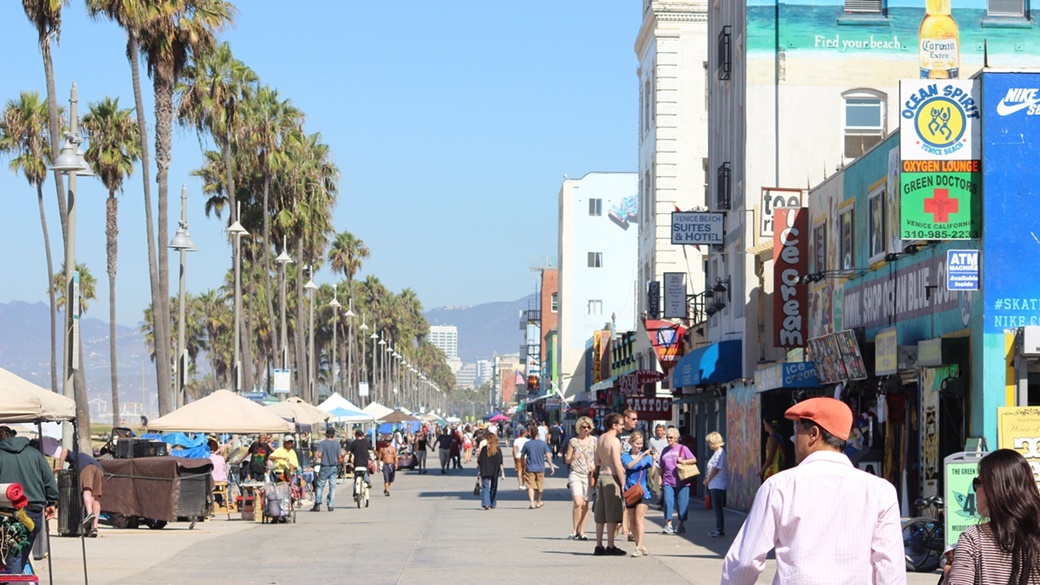
Day 5: Venice Beach and Santa Monica Pier
Venice Beach and Santa Monica are among my guilty pleasures around Los Angeles. Unlike, for example, Hermosa Beach, they are more touristy and, unfortunately, full of homeless people in recent times. However, every visit offers a unique atmosphere.
📍 Venice Beach
The sandy Venice Beach attracts all sorts of interesting people. Street artists are drowned out by aspiring rappers, who only need a few dollars to treat you to a private concert. The streetball court is full of players who already see themselves in the NBA. Similarly, the skateboarders at the skate park right on the beach are just as talented.
On the beach itself is the legendary Muscle Beach, the outdoor gym where, in the 1970s, Arnold Schwarzenegger and others built their muscles. Today, Venice Beach is populated by cyclists, skaters, and joggers, while cafes and souvenir shops line the bike path.
📍 Santa Monica
Run all the way to the Santa Monica Pier. Before hopping on the Ferris wheel or the roller coaster, stop at the front of the pier. The restaurant Bubba Gump Shrimp Company inspired by the famous Forrest Gump movie has a branch here. Surprisingly, it’s not just capitalizing on the name; the chain is owned by the movie distributor’s parent company.
Nearby the beach are several pricier restaurants as well as cheaper fast food places like McDonald’s and Johnny Rockets. Enjoy the sunset and, after dark, drive further north. Affordable accommodation is available at a motel in the city of Ventura, located about 81 mi away.
- Route: 81 mi / 2:10 h
- Accommodation: Motel 6-Ventura, Ventura
-
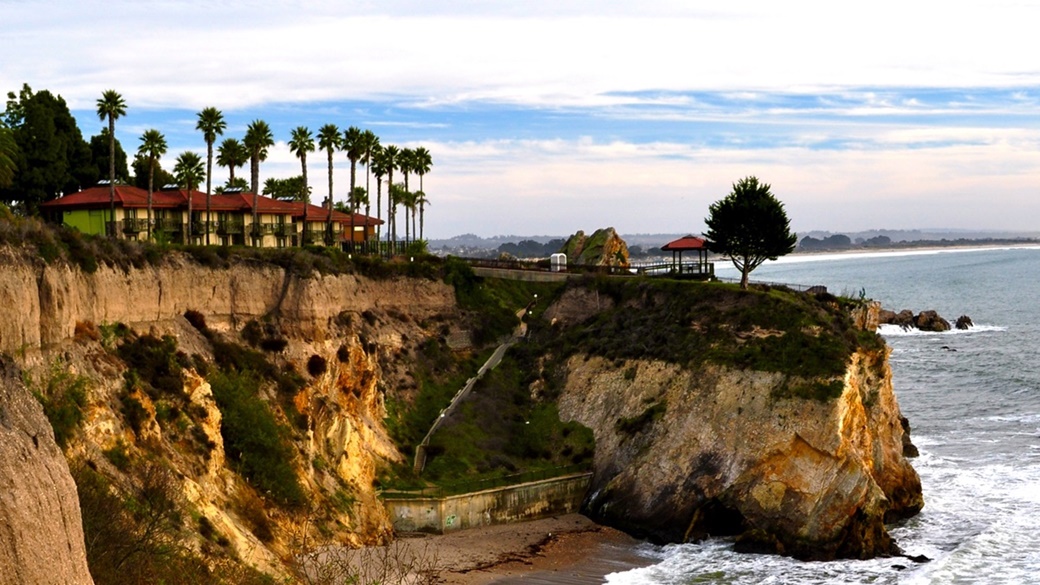
Day 6: Santa Barbara and Pismo Beach
📍 Santa Barbara
Start your morning with breakfast at the motel, then head west to the city of Santa Barbara, with around 86,000 residents. The city was founded by the Spanish in 1782, when they still controlled all of Mexico. Observant visitors will notice the nearly uniform architectural style throughout Santa Barbara.
On June 29, 1925, a devastating earthquake struck Santa Barbara, completely destroying the city’s historic center. As part of the reconstruction, it was decided that all buildings would be constructed strictly in the Spanish Colonial Revival style. This change altered the city’s character, but Santa Barbara gained a unique charm, with churches featuring bell towers, farmers’ markets, and a branch of the University of California with 24,000 students.
On a hot summer day, cool off with ice cream from the California chain McConnell’s, which has been around since 1949. McConnell’s has several locations in Santa Barbara, with the main one located at 728 State Street. If you can’t choose from their flavors, I recommend “Chocolate Peanut Butter Brownie” and salted caramel.
📍 Pismo Beach
In the afternoon, head to Pismo Beach. I mean literally, as you can park right on the beach. Pismo Beach, with a population of 7,948 (as of 2023), was once known as the “Clam Capital of the World” in the 1950s. The long, wide beaches were once famous for large-scale clam harvesting.
Though those days of glory are long gone, the city still holds the annual Pismo Beach Clam Festival in October. If it’s still daylight, you can rent a kayak from one of the shops along the beach and paddle out to view the rocks from the ocean’s perspective. You can also book a guided tour on a single or double kayak.
There’s no need to rush. The most comfortable accommodation for tonight is Motel 6. It’s located close to the ocean, and the beach is just a few minutes’ walk away.
- Route: 129 mi / 2:45 h
- Accommodation: Motel 6 Pismo Beach CA Pacific Ocean, Pismo Beach
-

Day 7: Hearst Castle, McWay Falls Waterfall, and Bixby Creek Bridge
Get up early today, as you will have a long drive further north and a very busy schedule.
📍 Pismo Beach
Make your first stop on your Pacific Coast Highway road trip after just under an hour of driving between the towns of Cambria and San Simeon.
At a place called Piedras Blancas, elephant seals gather. If you’re unfamiliar with the northern elephant seal, think of a seal. Dozens of them live here year-round, and there is no charge for the tour. Plan for a 20-30 minute stop and, please, be respectful of the animals.
📍 Hearst Castle
The main highlight of the day is the national historic landmark Hearst Castle, built by the magnate William Randolph Hearst in 1919. A two-time member of the U.S. House of Representatives for the Democrats and an unsuccessful mayoral candidate for New York, he made his fortune through the publication of newspapers such as the San Francisco Examiner, New York Morning Journal, and the tabloid New York Daily Mirror.
The lavish Hearst Castle houses 165 rooms, including 56 bedrooms and 61 bathrooms. It boasts tennis courts, a private cinema, the largest private zoo in the world, and a private airport. The estate’s centerpiece is the Neptune Pool, an outdoor pool featuring statues, fountains, and an adjacent facade of an ancient temple.
Hearst Castle is open to the public daily, with seven different tours available. The basic Grand Rooms Tour lasts about one hour, and the admission fee for an adult is $35. There is ample parking at the Hearst Castle visitor center, and I recommend arriving early in the morning. The castle gates open at 9:00 AM, and a thorough tour can take up to four hours.
📍 McWay Falls Waterfall
After the tour, continue driving north for another 53 mi. The next stop is the easily overlooked McWay Falls, located just before the town of Big Sur.
Follow the signs and park either for free along the roadside or at the parking lot in Julia Pfeiffer State Park for $10.00. McWay Falls, which is 79 ft tall, and Alamere Falls to the northwest of San Francisco are the only two waterfalls in California that flow directly into the ocean.
From the parking lot, it’s a 5-10 minute walk to the viewpoint of the waterfall.
📍 Oceanview Restaurant
Satisfy your hunger about 8 mi further north at Nepenthe Restaurant, which offers stunning ocean views. The restaurant, located near Cabrillo Highway, has been serving guests since 1949. Reader Veronika recommends trying the burger. Expect to pay around $55 for a meal, including a drink and tip.
📍 Pfeiffer Beach
You’ll capture great Instagram photos a little further down the road at Pfeiffer Beach, where nature will make it easy for you to adjust your filters. Thanks to the manganese garnet from the surrounding rocks, the sand on the beach is tinted purple.
You can park your car along the highway and take a 2.2 mi walk, or navigate a narrow access road to the beach and pay $15.00 for parking. Instead of swimwear, wear sturdy shoes, as you’ll be walking over stones.
📍 Bixby Creek Bridge
The Bixby Creek Bridge stands 279 ft tall and is one of the most photogenic spots along the Pacific Coast Highway, also featured in the introductory photo for this article.
Opened in 1932, you can park at the nearby Castle Rock Viewpoint. A brief stop at the bridge will take no more than 15-20 minutes.
In the mountains surrounding Big Sur lived one of the most famous Beat Generation writers, Jack Kerouac. The setting of his autobiographical novel Big Sur (1962) is set right here.
It’s just a half-hour drive to a motel in Monterey with free parking.
- Route: 160 mi / 3:25 h
- Accommodation: Bayside Inn, Monterey
-
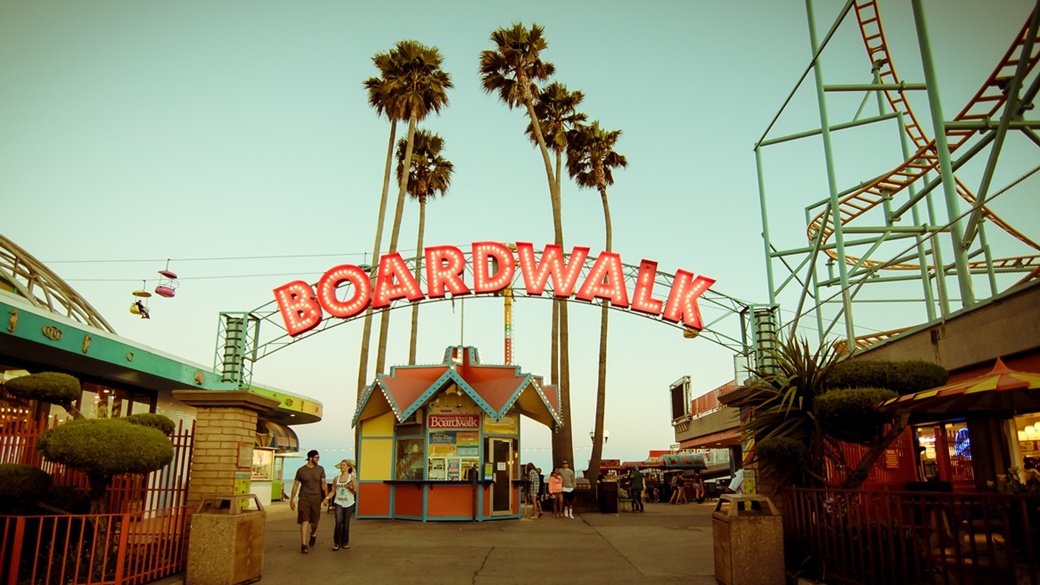
Day 8: Monterey Aquarium, 17-Mile Drive, Santa Cruz
📍 Monterey Bay Aquarium
Today’s schedule is packed, so get up early. The Monterey Bay Aquarium opens its doors at 10:00 AM. One of the most popular aquariums in California, it has been in operation since 1984. Paradoxically, it is located in a former sardine cannery. Thanks to its access to fresh ocean water, the aquarium is home to 35,000 animals from 620 different species.
A visit will take about three hours. In the large aquariums, you can spot sharks, jellyfish, otters, and kelp forests. The Monterey Oceanarium is one of the few places in the world to exhibit endangered yellowfin and bluefin tuna. Buy tickets online, with prices for adults at $65, students under 17 at $50, and children ages 3-12 at $45. These prices were last updated on March 14, 2025.
Monterey was also home to Pulitzer Prize and Nobel Prize-winning author John Steinbeck. The setting of his novel Cannery Row takes place in the area now occupied by the aquarium and tells the stories of Monterey’s residents during the Great Depression.
📍 17-Mile Drive Scenic Road
After lunch, get in your car and take a ride along the 17-Mile Drive. This private scenic road runs along the coast all the way to the famous Pebble Beach and offers several stops.
A great view of the Pacific can be seen from 801 ft high hill Huckleberry Hill, and you can enjoy a walk right by the ocean along the wooden boardwalk at Spanish Bay Beach. Golf fans might recognize the 18th hole here with its stunning view and perhaps even the special 19th hole, as it’s referred to by the nearby restaurant The Tap Room.
However, the biggest attraction on the 17-Mile Drive is The Lone Cypress, one of the most famous trees in America. The solitary cypress has been growing on a rocky cliff for over 250 years.
There is a fee of $12.00 for the 17-Mile Drive, and the drive will take around 2-3 hours.
📍 Santa Cruz Beach Boardwalk
Just past the end of 17-Mile Drive, you will find the Del Monte shopping center with a supermarket, Starbucks, Chipotle Mexican Grill, and other restaurants. You can refuel here before embarking on the one-hour drive to the coastal city of Santa Cruz, where today’s itinerary ends.
The main attraction in Santa Cruz is the wooden boardwalk with an amusement park, which includes a roller coaster, Ferris wheel, chain carousel, and other rides. Entrance to the Santa Cruz Beach Boardwalk is free, but each attraction costs between $5.00 and $10.00. On some summer evenings, all attractions are just one dollar.
The amusement park has been operating continuously since 1907, and the wooden roller coaster Giant Dipper from 1924 is one of the oldest in the United States. Santa Cruz Beach Boardwalk closes at 11:00 PM during the summer, and several times a week, you can enjoy a free concert or a free outdoor movie.
Your car can be parked for free at the accommodation, and it’s just under a 10-minute walk from Americas Best Value Inn to the boardwalk. Dozens of cafes, restaurants, and affordable fast-food options are also within walking distance from the motel.
- Route: 66 mi / 2:00 h
- Accommodation: Riverside Inn & Suites Santa Cruz, Santa Cruz
-
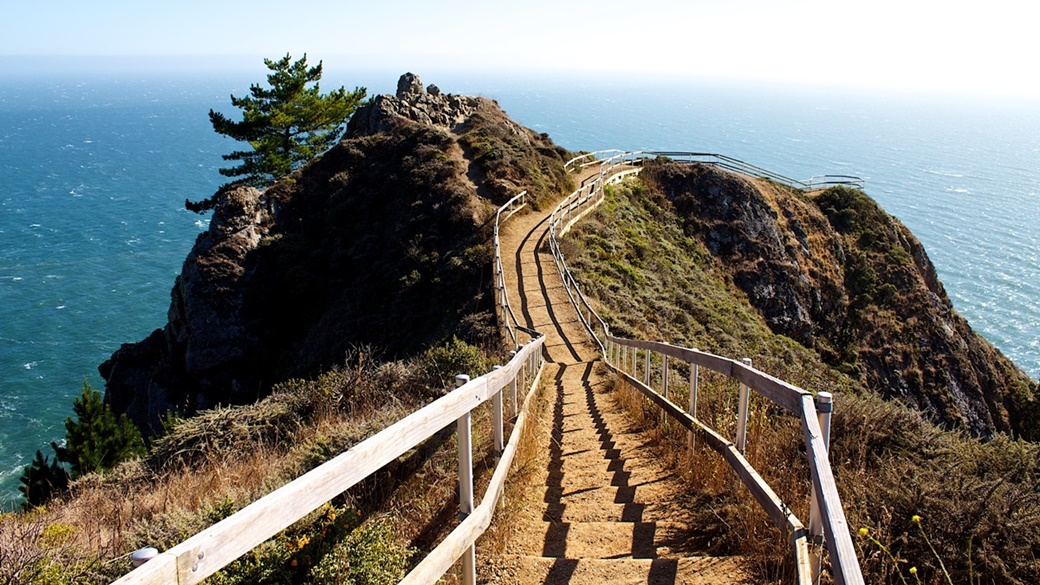
Day 9: San Francisco, Muir Beach Overlook, Glass Beach
You can spend a bit more time in Santa Cruz in the morning, as it’s just 78 mi along the Pacific Coast Highway to San Francisco, which takes under two hours by car.
While in Santa Cruz, you can visit the Surfing Museum located in a lighthouse on Lighthouse Point. It documents the history of surfing in California dating back to 1885, when it was introduced to locals by Hawaiians.
A few minutes north of Santa Cruz by car is the famous tourist trap Mystery Spot. It presents itself as a place where physical laws don’t apply, and people levitate. The charm lies in several twisted cabins and benches. The entrance fee is $10.00, and there’s an additional charge of $5.00 for parking.
One day is not enough in San Francisco. Be sure to visit Alcatraz, the Chinatown, the world-famous Golden Gate Bridge, take a ride on the historic cable car, and explore Vermont Street. You’ve probably already seen pictures of the world’s most twisted street.
Hotels in San Francisco are expensive, and during peak season, they often get booked very early. I recommend checking out my tips, and a great option is the Parker Guest House right in San Francisco.
- Route: 78 mi / 2:00 h
- Accommodation: Parker Guest House, San Francisco
-
Itinerary for the Coming Days
If you plan to continue north from San Francisco, check out our USA travel tips. Here are three suggestions for interesting places to visit.
1️⃣ Muir Beach Overlook
The ocean view at Muir Beach Overlook is just a half-hour drive from San Francisco along the Pacific Coast Highway. There is a free parking lot a short distance from the overlook.
2️⃣ Glass Beach
Glass Beach in Fort Bragg, near the Pacific Coast Highway, is a unique American spot made up of hundreds of thousands of glass pebbles. In the early 20th century, this area was used as a dump, where glass bottles, among other things, were carelessly discarded. Over the years, nature has transformed them into a unique masterpiece.
Glass Beach is located within the MacKerricher State Park, and removing pebbles is prohibited.
3️⃣ Drive-Thru Tree Park
The Drive-Thru Tree Park is located 62 mi north of Glass Beach. It’s worth visiting if you’re passing by. For $15.00, you can visit the park and drive through its tallest attraction, a 315 ft high tree. A similar tree tunnel can also be found in the Sequoia National Park.

 10 Best Photo Places in the USA
10 Best Photo Places in the USA

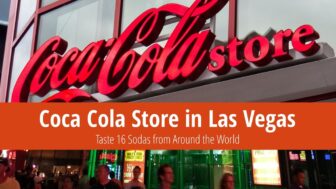
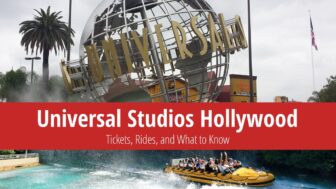


Contribute with Your Question or Personal Experience